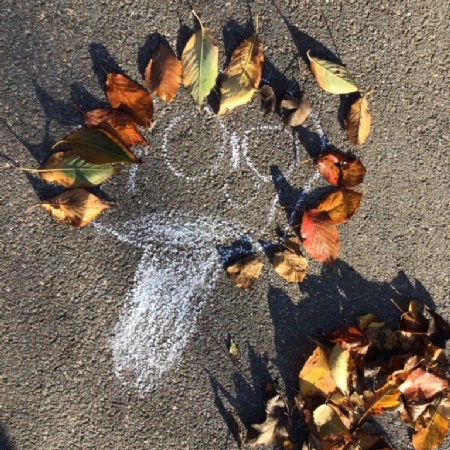Our Learning This Week In The Adventurers...

The staff have noticed that during our free flow choosing time...
Children have been working together to build more complex structures such as bridges. They have taken turns to balance or hold hands to support one another across the beam.
Children have shown growing interested in the fallen leaves around the nursery garden, making links to the Tapestry Challenge and suggesting they look like a lion's mane.
Children have a continued interest in potions following our story of the week "Meg and Mog".
The children have been excited to talk to us about their experiences of Bonfire night (at home) and the fireworks they have seen lighting up the sky.
The children have continued to be intrigued by pumpkins, looking closely at their colour, shape and texture. This has enabled staff to introduce a range of descriptive vocabulary. They have also had great fun scooping out the slimey insides!
So the staff have...
Added long wooden planks to the outdoor construction and praised turn taking and helping one another. Adults have worked closely with children to emphasise the importance of testing the safety of their structures prior to walking on them.
Children and adults have looked closely at the leaves found in the garden sharing their observations on size, colour, shape and patterns. Children painted their own Autumnal pictures with paint and worked with their teacher to build their own large scale tree. Children practiced their scissor skills and explored the medium of glue to stick on leaves.
Adults have prompted children to work together in order to create their own lions with leafy manes. Children were free to let their creativity roam and designed a range of funny faces.
Added various mixing containers and provided a range of ingredients such as spices and glitter to make their potions 'magical'. Adults have encouraged children to describe the changes occurring in their mixture, introducing vocabulary such as 'fizzing', 'bubbling' and 'dissolving'. We have asked children to write down their magical recipe and joined in with their imaginative play- even when they turned us into frogs!.
Spent time listening and supporting the children to share their experiences. We have also been modelling how to wait for a pause in the conversation before sharing our thoughts, to avoid talking over each other.
Staff have provided a range of pumpkins and squashes to explore using all of their senses. Adults encouraged children to make predictions, using their existing knowledge of pumpkins, to guess what could be inside the squashes. We also found a blue pumpkin! Most thought it would be blue inside but it was actually yellow!
Our story of the week was...
Meg and Mog written by Helen Nicoll and illustrated by Jan Pieńkowski.
While sharing the story we have challenged the children to create all sorts of sound effects with their voices and introduced new vocabulary surrounding onomatopoeias such as 'crash', 'bang', 'boom'. Children found it particularly challenging to add them at the appropriate points in the story.
During our group times...
Adults have supported children's interest in fire by working in small groups to build our own fire. We focused on fire safety, learning safe ways to light and put out a fire, discussing the role of fire fighters and talking about fire engines.
The children collected their own sticks from the nursery garden after a child suggested they "rub sticks together like on Peppa Pig"! When that idea didn't work, we added the sticks to the fire pit and watched the teacher light it. There was a lot of discussion as they watched the fire burn and it was very exciting to put the fire out with water and watch the steam moving in the wind.
We pretended our pens were magic wands and as we made our spell we moved our magic wands creating all sorts of movements across the paper. We imitated the drawing of simple shapes and movements, on a large scale, learning the associated vocabulary to narrate these actions.
In our number group time children have continued to make a small collection (usually 1-3) visually matching another collection. We have strived to understand cardinality with improved 1 to 1 correspondence.
